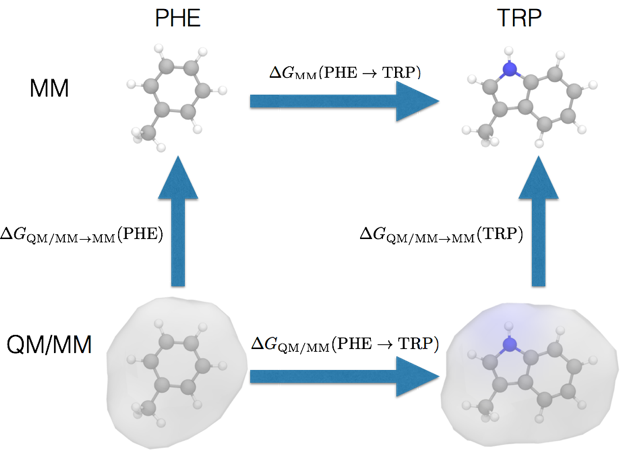Step 7: QM/MM Hydration

Now you have the difference in free energy from the QM/MM to MM models of the side-chains, the question now is what to do with them? I tend to call these free energies “correction free energies”, as you can use them to “correct” a free energy calculated using an MM model to become one that is calculated using a QM/MM model. For example, we have used ligandswap calculations to calculate the relative hydration free energy of PHE and TRP using the MM model (if you are interested in how we did this, take a look here). The relative MM hydration free energy of PHE and TYR calculated using ligandswap is -5.0 kcal mol-1.
To convert this into the relative QM/MM hydration free energy, we can use this free energy cycle;


EXERCISE 6 - Calculate relative QM/MM hydration free energies
Given that the relative MM hydration free energy for PHE and TRP is -5.0 kcal mol-1, use the free energy cycle above and the QM/MM to MM relative free energies for PHE and TRP you calculated in the last step to calculate the relative QM/MM hydration free energy.
QUESTION 6.1 - How does the relative QM/MM hydration free energy of the side-chains compare to the relative MM hydration free energy? Which side-chain has the greater affinity for water? Does this agree with the MM prediction?
QUESTION 6.2 - If possible, talk to the other people in your group to find the relative QM/MM hydration free energies calculated using each of the different semi-empirical methods. Place them all in a table. Which semi-empirical method gives the largest difference in hydration free energy between the two side-chains? Which semi-empirical method gives the closest relative hydration free energy to the MM model?
If you get stuck or need help, you can take a peek at this model answer for exercise 6.